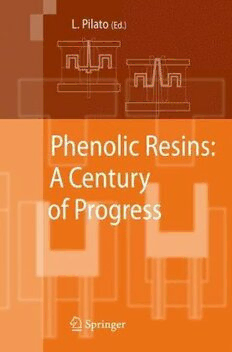
Phenolic Resins: A Century of Progress PDF
543 Pages·2010·7.062 MB·English
Most books are stored in the elastic cloud where traffic is expensive. For this reason, we have a limit on daily download.
Preview Phenolic Resins: A Century of Progress
Description:
The legacy of Leo Hendrik Baekeland and his development of phenol formal- hyde resins are recognized as the cornerstone of the Plastics Industry in the early twentieth century, and phenolic resins continue to ?ourish after a century of robust growth. On July 13, 1907, Baekeland ?led his “heat and pressure” patent related to the processing of phenol formaldehyde resins and identi?ed their unique utility in a plethora of applications. The year 2010 marks the Centennial Year of the prod- tion of phenolic resins by Leo Baekeland. In 1910, Baekeland formed Bakelite GmbH and launched the manufacture of phenolic resins in Erkner in May 1910. In October 1910, General Bakelite began producing resins in Perth Amboy, New Jersey. Lastly, Baekeland collaborated with Dr. Takamine to manufacture phenolic resins in Japan in 1911. These events were instrumental in establishing the Plastics Industry and in tracing the identity to the brilliance of Dr. Leo Baekeland. Phenolic resins remain as a versatile resin system featuring either a stable, thermoplastic novolak composition that cures with a latent source of formaldehyde (hexa) or a heat reactive and perishable resole composition that cures thermally or under acidic or special basic conditions. Phenolic resins are a very large volume resin system with a worldwide volume in excess of 5 million tons/year, and its growth is related to the gross national product (GNP) growth rate globally.
See more
The list of books you might like
Most books are stored in the elastic cloud where traffic is expensive. For this reason, we have a limit on daily download.
